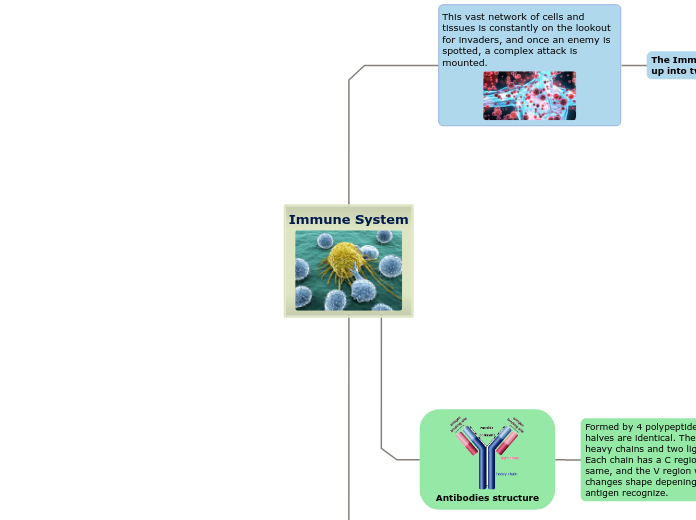Immune System
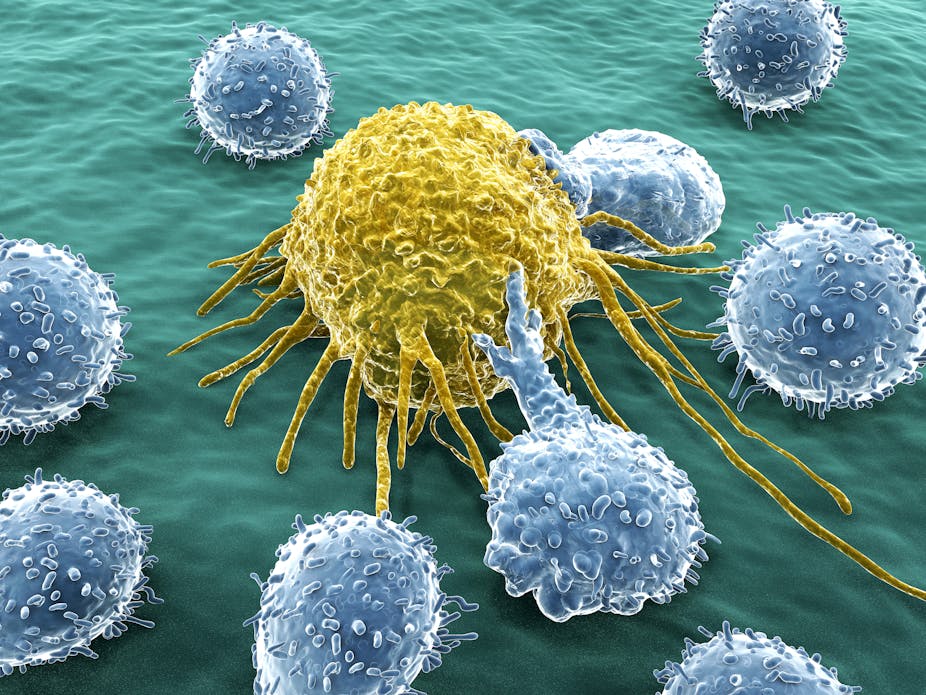
This vast network of cells and tissues is constantly on the lookout for invaders, and once an enemy is spotted, a complex attack is mounted.

The Immune Systen can be split up into two parts:
Innate defense system

We are all born with some level of immunity to invaders. This innate immunity includes the external barriers of our body. Is general and non-specific.
External members
-Skin: Epithelial cells on the surface of the body.
-Mucous membranes: wherever we have natural openings on body cavities, these are lined with mucosae. Tend to be acidic which inhibits bacterial growth.
Internal Members
Inflamatory response: 1) The fluid pushes material into lymphatic vessels. The fluid delivers proteins for clotting.
2)Phagocytes the arrive to do phagocytosis. Begins when phagocytes enter the blood stream from the red bone marrow.
3)Then in Margination phagocytes cling to cappilary walls at the site of injury by recognizing signals and inflamed cells.
4)In Diapedesis phagocytes squeeze out the capillary.
5)Chemotaxis will occur when phagocytes migrate up the gradient of certain molecules and perform phagocytosis.
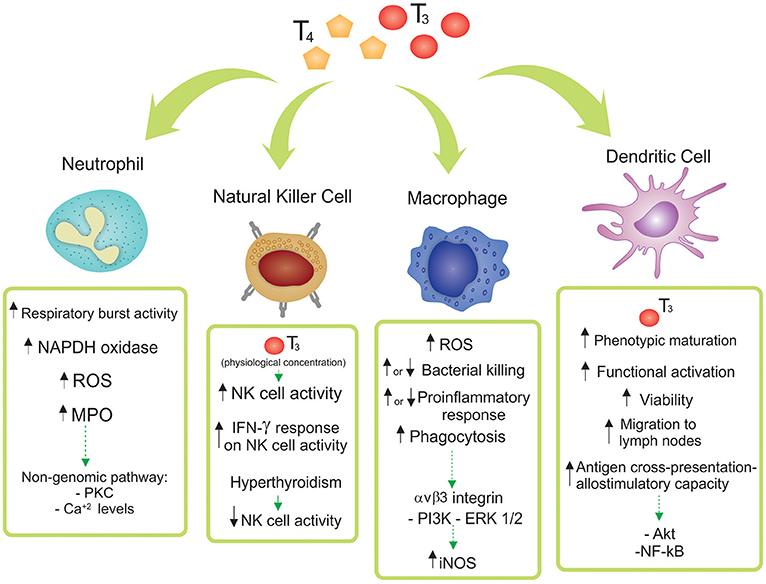
Adaptive defense system
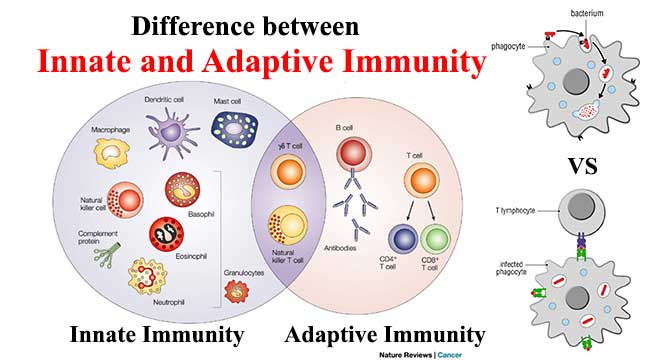
This protect from pathogens develops as we go through life. This referred to as immunological memory.
Parts
-Antibodies: Large Y-shaped proteins that are produced by lymphocytes. They circulate in the blood and lymph looking for pathogens.
-Antigen: Foreign substance recognized by the body as not belonging to the body.
The part of the foreign substance interacts with the immune system, called antigenic determinant.
-Different lymphocytes will recognize different determinants depending the inmunity. Lymphocyes orginate inside red bone marrow, from hematopeic stem cells. Lymphocytes become inmonucompetent.
-On B cells, receptors are membrande-bound antibodies. Lymphocyes must exhibit self-tolerance.
Types of adaptive immune response
-Humoral: Occurs when a new B cells encounters its antigen causing: endocytosis, followed by proliferation and differentiation into plasma cells. These will then mass produce the antibody that recognized the antigen, these will circulate in the blood and lymph, looking for that same thing again.
Humoral immunity can be attained naturally (infecton) or artificially (vaccine).

Passive Humoral immunity.
This type of immunity is “borrowed” from another source. This passive immunity protects the baby from some infections during the early years of their life.


Antibodies structure
Formed by 4 polypeptides the two halves are identical. There are two heavy chains and two light chains. Each chain has a C region, always the same, and the V region which changes shape depening on an antigen recognize.
Classes of Antibodies:
1) IgM: Pentamer, kills bacteria.
2) IgA: Dimer, congregates in fluids, where it protects gateways.
3) IgD: Monomer, stays bound to B lymphocytes.
4) IgG: Monomer.
5) IgE : Monomer, protects against parasites.
Ig: Immunoglobulin (antibody).
Antibodies tag their antigen for later destruction.
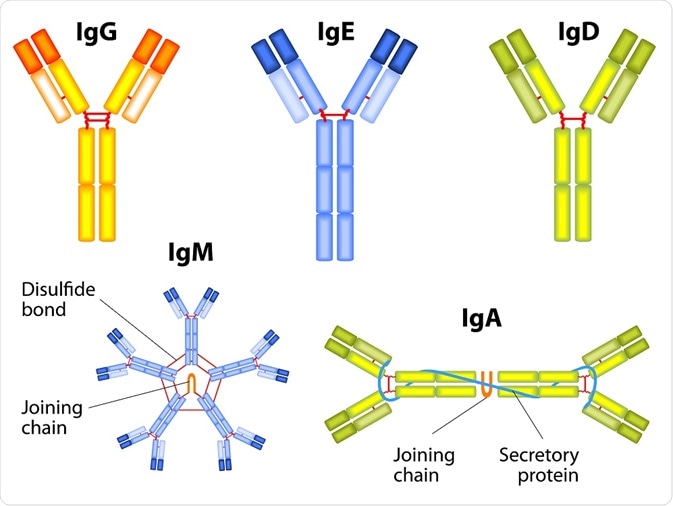
Cellular Immunity (adaptive immune response)

T cells: Can kill cells infected by viruses or bacteria or even cancer cells.
Types
1) CD4: Activate B cells, T cells, and macrophages.
2) CD8: Destroy foreign cells, or body cells with foreign agents.
These refer to glycoproteins that act as surface receptors.
T cells activation and differentiation:
1) T cell antigen receptors interact with antigen presenting cells.
2) Co-stimulation occur form other molecules on the surface of antigen-presenting cell.
